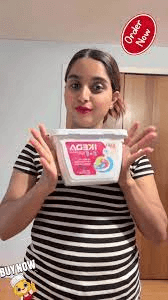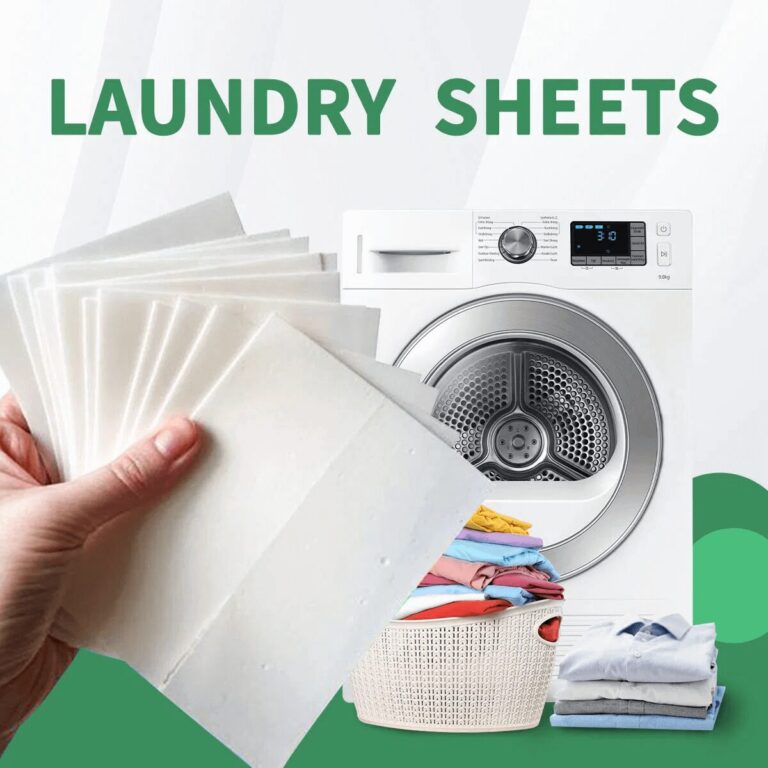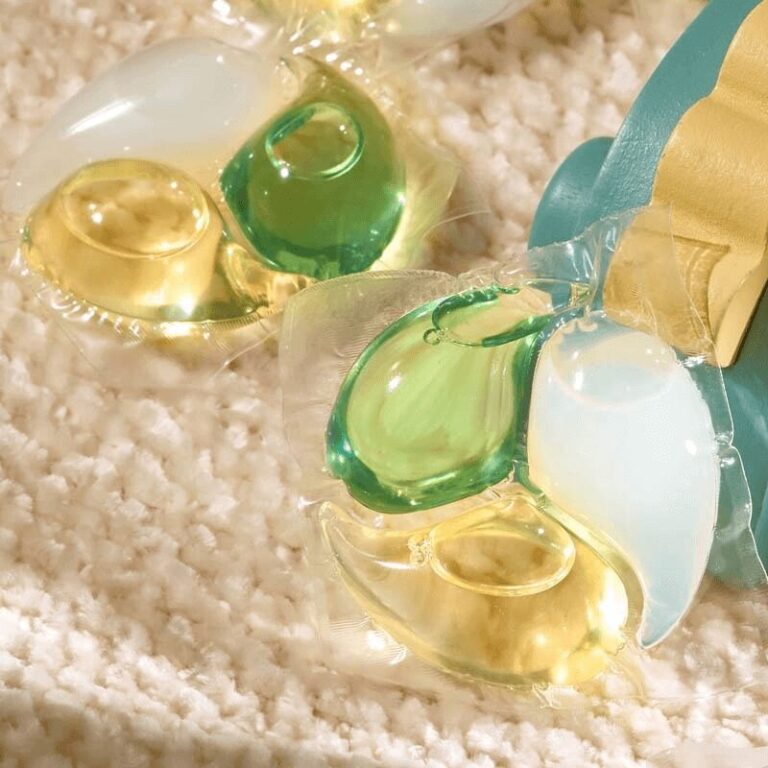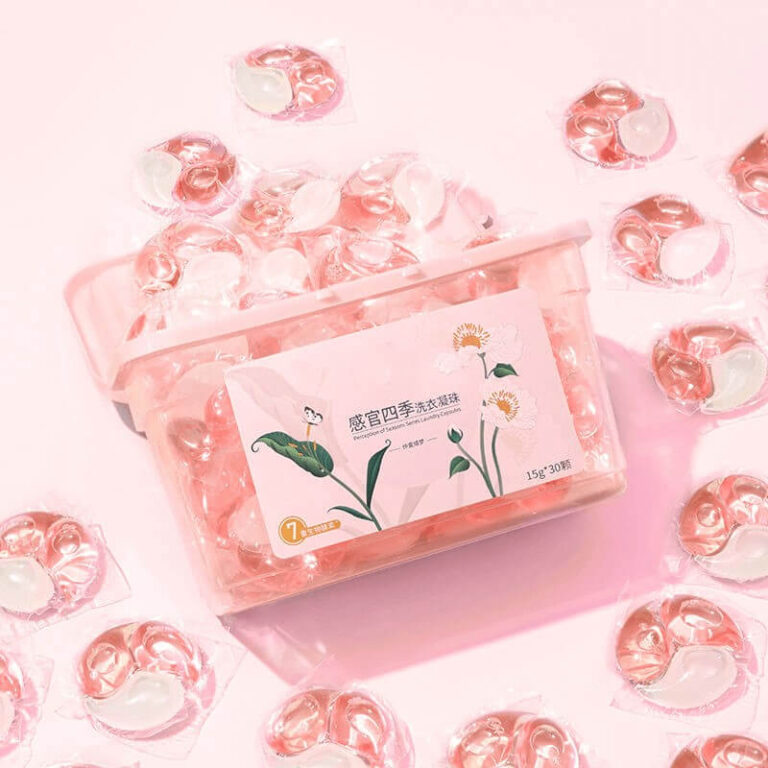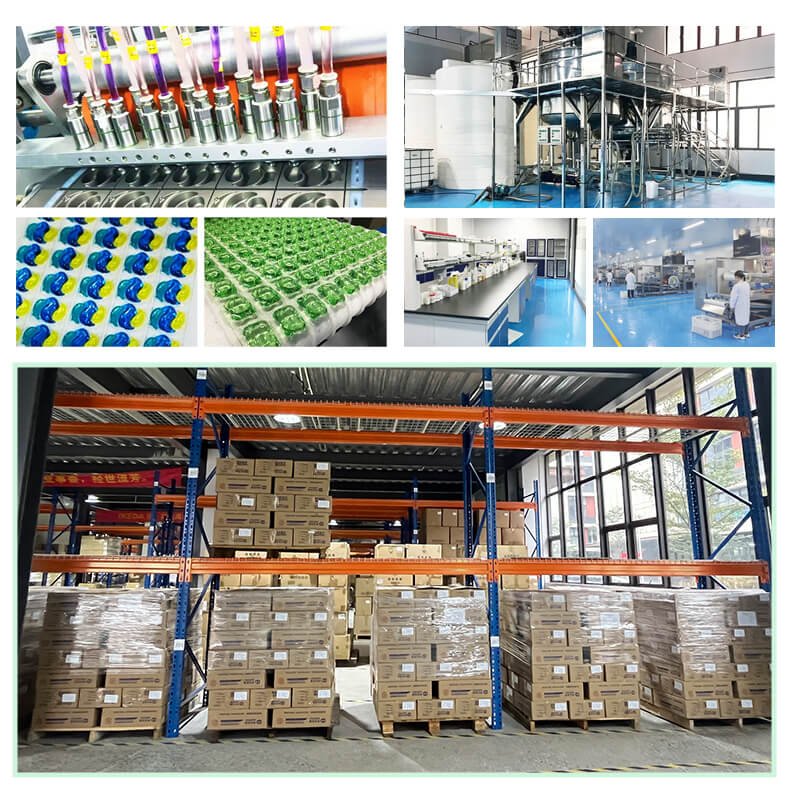Introduction
For the hospitality industry, immaculate white linens symbolize comfort, cleanliness, and professionalism. Guests often judge a hotel’s hygiene standards by the brightness and softness of its sheets, towels, and pillowcases. However, many hotels face a persistent challenge — linens turning grey or yellow after repeated washing.
This discoloration not only affects the guest experience but also shortens the lifespan of expensive textiles, increasing replacement costs. The good news is that with the right washing techniques, chemical choices, and maintenance routines, this issue can be completely prevented or reversed.
Let’s explore why hotel linens lose their brightness, and most importantly, how to restore and maintain that crisp, fresh whiteness every time.
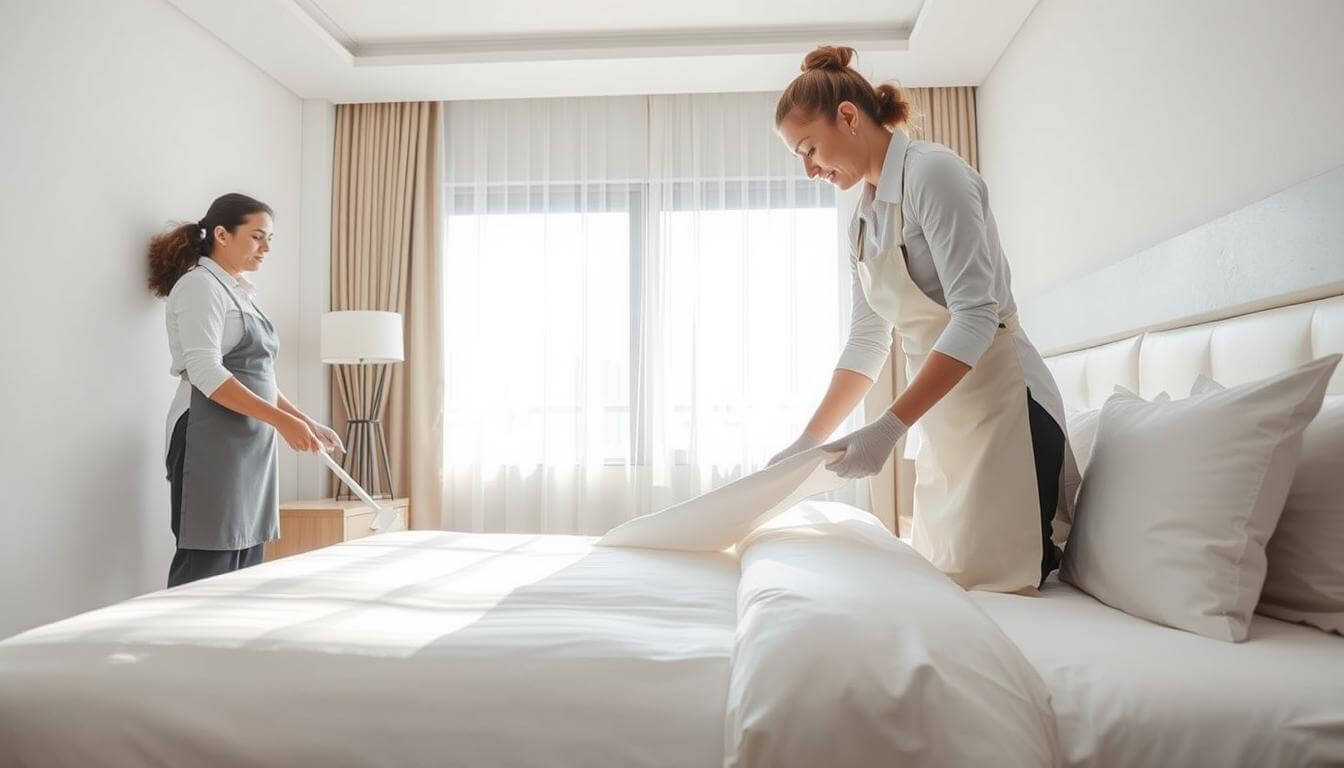
1. Why Hotel Linens Turn Grey or Yellow
Before addressing the solutions, it’s crucial to understand the causes behind discoloration. The greying or yellowing of hotel linens typically results from a combination of chemical residues, water quality, and washing methods.
1.1 Residual Detergent and Softener Build-Up
Excessive use of detergent or fabric softener leaves behind residues that cling to fibers over time. When exposed to heat during drying or ironing, these residues oxidize, causing a dull grey or yellow tint.
Tip: Overdosing detergent does not mean better cleaning — it often means more buildup.
1.2 Hard Water and Mineral Deposits
Water rich in calcium and magnesium (hard water) reacts with soap, forming insoluble salts that deposit on fabrics. These minerals dull the fabric’s natural brightness and make it stiff to the touch.
1.3 Improper Bleaching
Overusing chlorine bleach may cause yellowing due to chemical burns on fabric fibers, especially when mixed with protein or sweat stains. Additionally, residual chlorine may react with iron in water, leading to brownish-yellow discoloration.
1.4 Oxidation and Heat Damage
When linens are stored damp or exposed to high heat for too long, oxidation can occur — similar to how paper yellows over time. This effect is accelerated by detergent residues and high-temperature ironing.
1.5 Contaminated Washing Machines
If the washing machine itself is not cleaned regularly, grease, rust, and detergent residues accumulate, contaminating every new load. Even fresh linens can come out looking dull or stained.
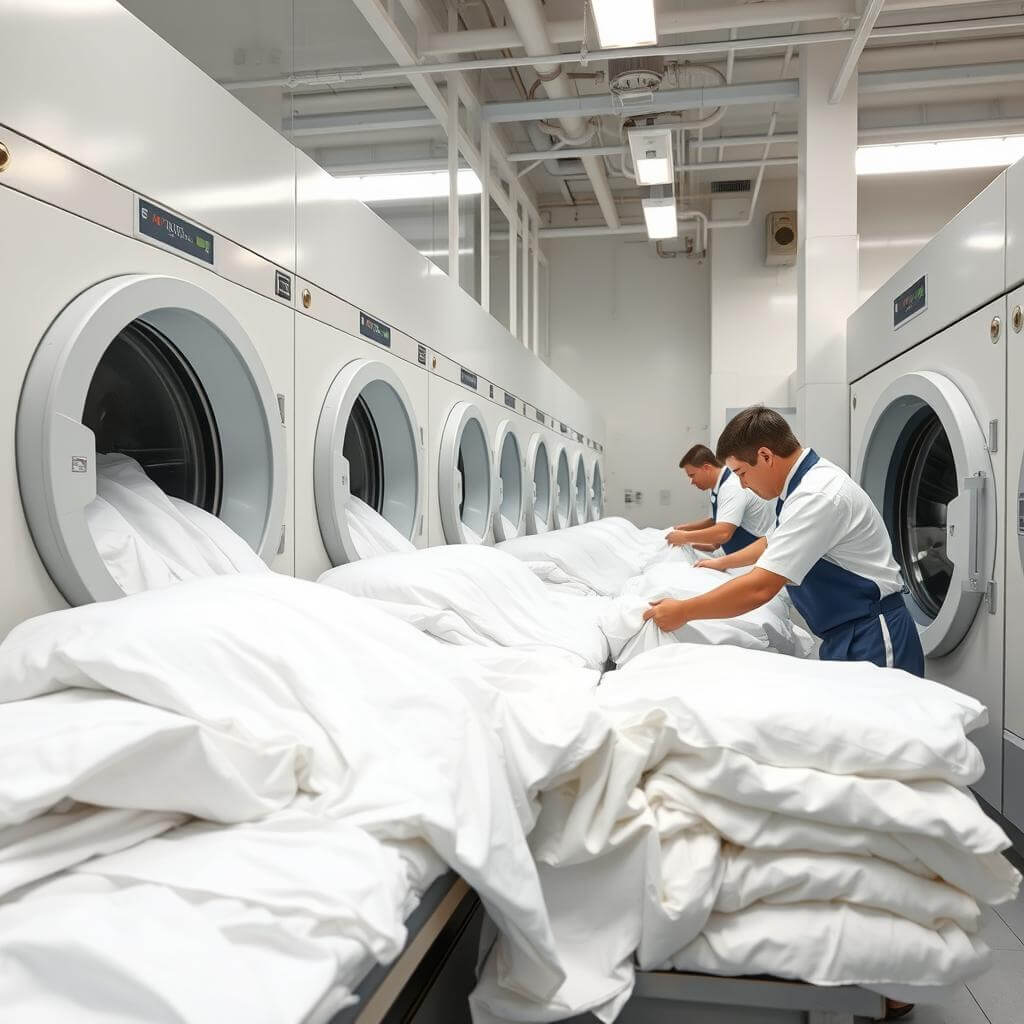
2. How to Restore Whiteness to Hotel Linens
Now that we understand the causes, let’s look at effective solutions to restore whiteness and softness.
These methods are practical, scalable, and suitable for commercial laundries and hotel in-house washing systems alike.
2.1 Use Professional-Grade Detergents and Laundry Liquids
Switch from regular consumer detergents to professional hotel-grade detergents designed for repeated washing cycles.
High-quality commercial detergents:
- Contain balanced surfactants that deeply clean without damaging fibers.
- Dissolve fully even in cold or hard water.
- Are optimized to remove protein-based stains (such as sweat or body oils).
For best results, use a combination of detergent + oxygen-based bleach + neutralizer in the proper sequence.
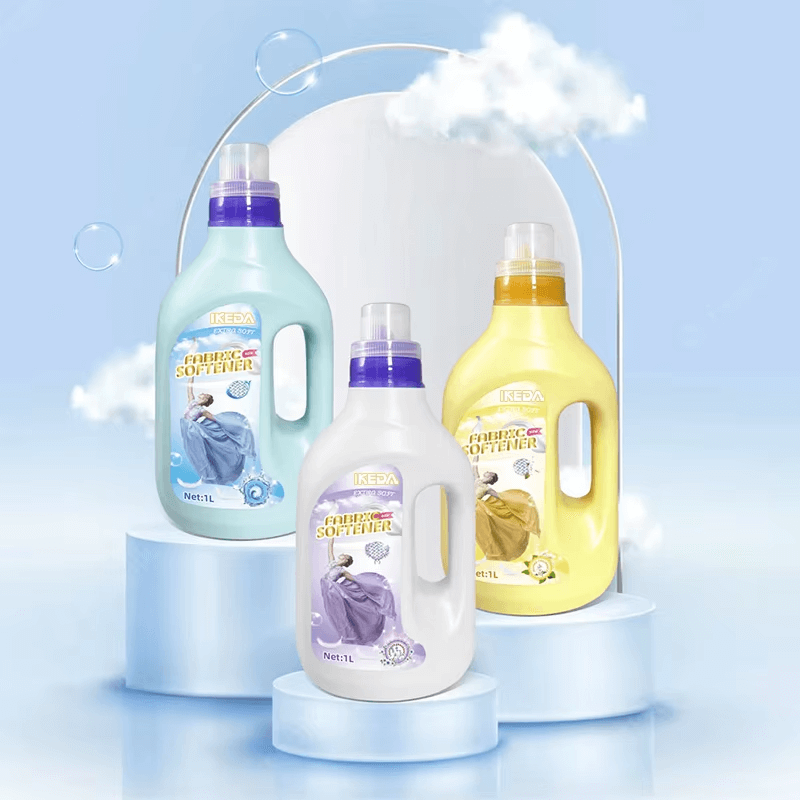
2.2 Control Washing Ratios and Dosage
Overdosing chemicals is a common mistake. Each linen load should follow the recommended detergent-to-water ratio based on load weight, water hardness, and soil level.
- Too little detergent: leaves stains and bacteria.
- Too much detergent: leads to buildup and greying.
Automatic dosing systems can ensure consistency and prevent human error.
2.3 Add Water Softeners or Install a Softening System
If your hotel is located in an area with hard water, invest in a water softening system or use liquid softening agents in each wash.
Soft water helps detergent perform at maximum efficiency and prevents mineral buildup that dulls the fabric.
2.4 Choose Oxygen Bleach Instead of Chlorine Bleach
Oxygen-based bleach (peroxide-type) is safer for fabrics and maintains brightness without damaging fibers.
- Chlorine bleach: fast but harsh; can weaken fibers and cause yellowing over time.
- Oxygen bleach: slower but gentler; restores whiteness effectively with less fiber damage.
Use oxygen bleach at 60–70°C (140–160°F) for optimal performance.
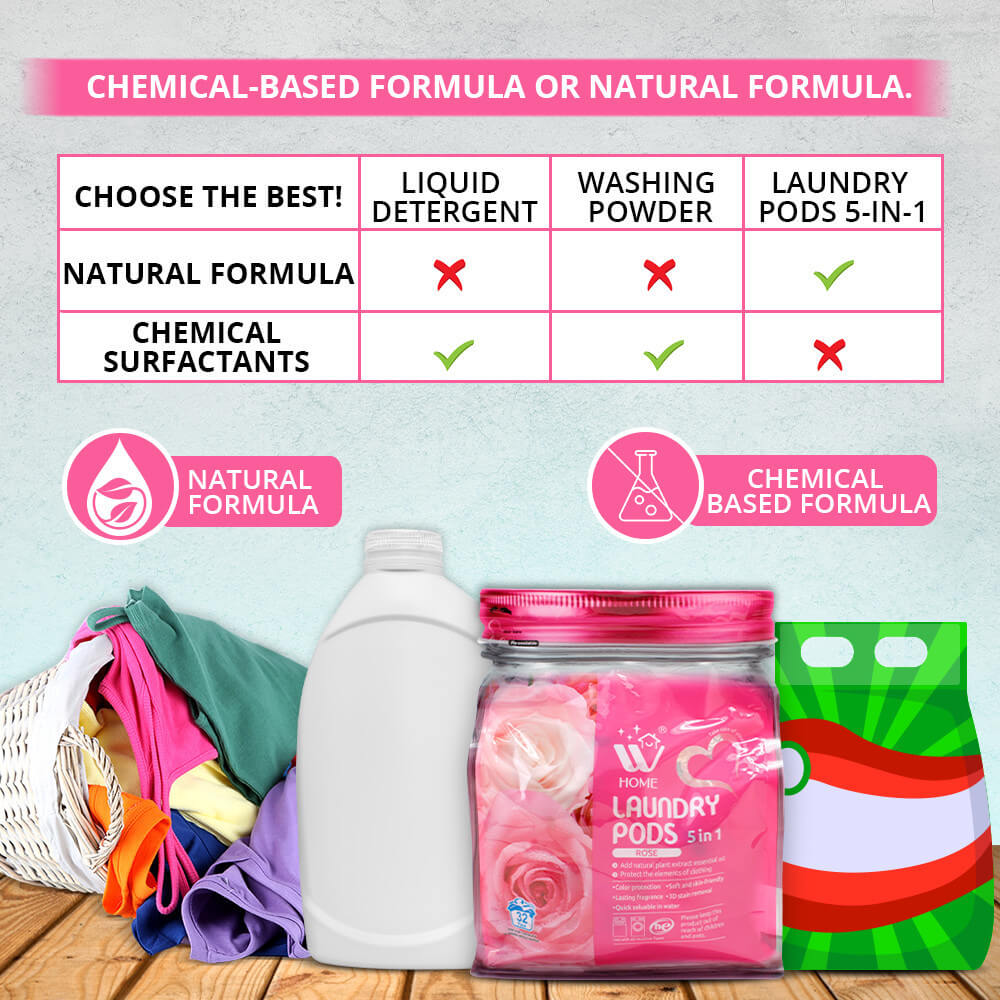
2.5 Perform a “Stripping Wash” Periodically
A stripping wash helps remove detergent residues, oils, and minerals that regular washing cannot.
This involves washing the linens at high temperature with a mixture of:
- Soda ash (alkaline booster)
- Oxygen bleach
- A small amount of detergent
Do this once a month to **revive whiteness** and extend linen lifespan.
2.6 Use Neutralizers to Balance pH
After washing, linens should be neutralized with an acidic rinse to remove alkaline residues from detergent and hard water.
Maintaining the fabric’s pH around 6.5–7.0 ensures softness and prevents yellowing from chemical imbalance.
2.7 Maintain Proper Washing and Drying Temperatures
Overheating can accelerate oxidation and yellowing.
Recommended guidelines:
- Washing: 60–70°C (140–160°F)
- Drying: below 80°C (176°F)
- Ironing: moderate temperature with minimal direct heat exposure
Avoid drying linens for too long — overdrying causes fiber damage and dullness.
2.8 Keep Washing Machines Clean
Every week, run a machine cleaning cycle using a descaler or vinegar + baking soda mixture to remove built-up residues.
Regular maintenance ensures that each wash starts with a clean environment, not one full of old detergent or rust.
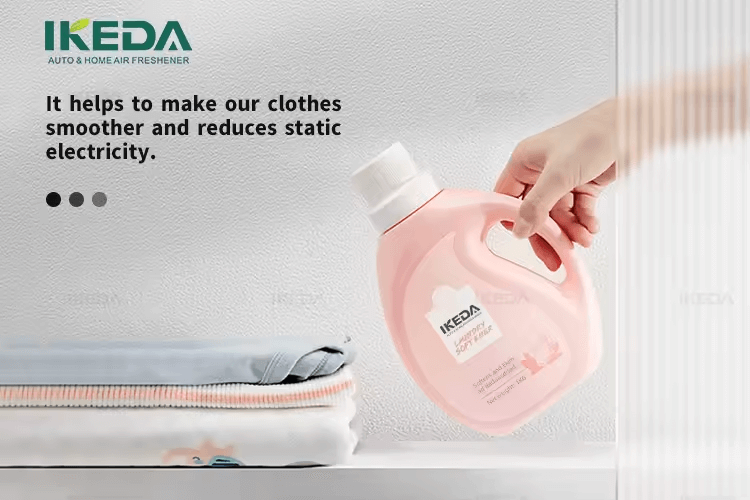
3. Professional Laundry Practices for Hotels
Hotels processing large linen volumes should adopt a systematic laundry management approach to maintain consistent quality.
3.1 Separate Linens by Degree of Soiling
Don’t mix heavily soiled towels with lightly used sheets. Washing them together leads to uneven cleaning results and chemical imbalance.
3.2 Standardize Washing Programs
Establish SOPs (Standard Operating Procedures) for different fabric types — sheets, towels, duvets, tablecloths — each with customized:
- Wash time
- Water level
- Temperature
- Chemical ratio
Consistent washing cycles yield predictable, high-quality results.
3.3 Train Staff on Proper Chemical Use
Laundry operators should understand the function and timing of detergents, bleaches, and neutralizers.
Improper sequencing (e.g., mixing bleach too early) can cause fabric burns or yellow stains.
3.4 Regular Linen Audits
Inspect linens weekly for discoloration, tears, or stiffness. Early detection allows for corrective measures before damage becomes irreversible.
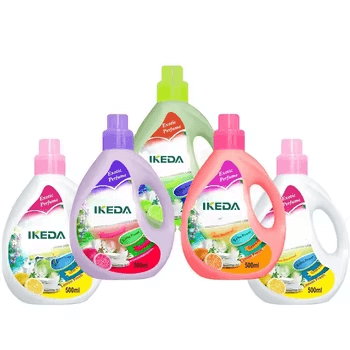
4. Preventive Tips to Keep Linens Bright and Fresh
Once whiteness is restored, maintaining it is key.
Here are some simple yet effective preventive habits:
- Avoid overloading washing machines to ensure proper rinsing and agitation.
- Rinse twice to remove detergent residues thoroughly.
- Store linens in a dry, ventilated area away from sunlight and moisture.
- Use color-safe laundry boosters or brighteners when necessary.
- Rotate linens frequently to ensure even usage and prevent excessive wear.
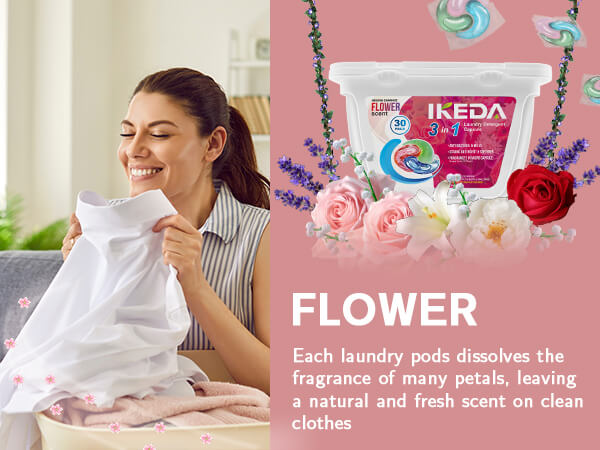
5. Recommended Product Solutions
At IKEDA, we’ve developed professional laundry solutions specially formulated for hotels, hospitals, and commercial laundries:
- IKEDA Professional Laundry Liquid: Deep cleaning with anti-greying technology, suitable for both soft and hard water.
- IKEDA Oxygen Whitening Agent: Non-chlorine formula that restores and protects whiteness.
- IKEDA Fabric Softener & Neutralizer: Balances fabric pH, enhances softness, and prevents yellowing.
These high-efficiency formulas are ideal for ODM/OEM customization, allowing hotels and laundries to brand their own cleaning line.
Conclusion
Maintaining bright, white linens is not just about appearance — it reflects the quality, hygiene, and professionalism of your hotel.
By understanding the science behind discoloration and implementing proper washing systems, you can extend linen life, reduce costs, and impress every guest with crisp, clean bedding.
Grey or yellow linens are not inevitable — they are preventable. With the right knowledge, water quality control, and premium cleaning products, your hotel can achieve the kind of pristine freshness that defines five-star hospitality. Please contact us to get the quotation you want.
